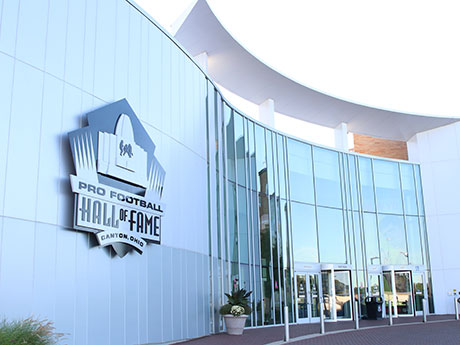By Ethan Elser, PACE Equity
In today’s turbulent commercial real estate landscape, developers and property owners face challenges to secure sufficient competitively priced capital. High interest rates, compressed valuations and a low leverage lending environment have complicated funding strategies and eroded traditional capital stack assumptions.
More and more, property owners and developers are turning to Commercial Property Assessed Clean Energy (C-PACE) financing due to its core attributes: low cost, nonrecourse, long-term and fixed-rate capital. With amortization periods of up to 30 years, owners and developers recognize that C-PACE terms are virtually unmatched in the private debt markets. As an assessment tied to the property rather than the borrower, C-PACE funding is being leveraged more than ever to support creative solutions in today’s marketplace.

C-PACE has evolved into a dynamic financial tool used across the lifecycle of a building — from new construction to recapitalizations to retrofits. C-PACE is used by savvy commercial real estate professionals to optimize their capital structure and boost their internal rate of return (IRR).
Identifying the financial utility of C-PACE in a shifting market
C-PACE is growing in popularity as an alternative to mezzanine debt, preferred equity and other high-cost financing. In today’s environment, C-PACE is particularly useful as an option to retire maturing bridge or construction debt, cover cost overruns or recapitalize during a slower-than-expected lease-up period — all without diluting ownership or resorting to high-yield alternatives.
This recapitalization capability is particularly important in scenarios where an asset has not yet achieved stabilized cash flow and owners must address debt service obligations or a loan maturity. In that case, C-PACE can extend the runway until operations are stabilized, replenish debt service reserves and help position the asset for stronger long-term performance.
Additionally, the ability to defer C-PACE payments until stabilization offers the advantages of preserving working capital and avoiding a capital call.
Local PACE requirements can differ by state and municipality, so be sure to work with a C-PACE capital provider who spends time during the term sheet phase to understand your project and capital needs and tailors the funding for you. In-house C-PACE financing engineers can also improve the funding experience since in-house expertise means maximized funding amounts and amortization terms.
Let’s take a look at some examples of projects in the Midwest that utilized C-PACE financing.
Available capital for expansion: recapitalization at the Hall of Fame Village
The professional football Hall of Fame Village, located in Canton, Ohio, draws visitors year-round to this popular destination. The Constellation Center of Excellence, a 75,000-square-foot facility in the Hall of Fame Village, was developed for retail, research and office space. After completion, Milwaukee-based PACE Equity funded $8.3 million in a recapitalization of the $50 million capital stack. The funds were used to free up capital for continued expansion at the Hall of Fame Village site.
Improved IRR: development of a corporate headquarters
A new Class A office building houses the corporate headquarters of a leading provider of financial, insurance and advisory services. Situated just 10 minutes south of Cleveland, this 131,489-square-foot space was funded with C-PACE covering 22 percent of the capital stack with fixed-rate funds over a 28-year term.
The project IRR increased when the owner used C-PACE to complete the stack rather than double-digit mezzanine debt. The project economics also improved as accretive leverage from C-PACE overcame lower leverage available from the construction loan.
Optimized returns: renovation of historic hotel
Originally opened in 1924, the Hotel Retlaw has been a boutique hotel in downtown Fond du Lac, Wisconsin, for the better part of a century. To renovate the hotel back to its former glory, the owners assembled a capital stack from several sources, including Historic Tax Credit (HTC) and Tax-Increment Financing (TIF).
Despite these sources, a gap remained in the stack. The owner filled the final gap with C-PACE financing, which can be used alongside HTC, TIF, New Markets Tax Credit (NMTC), EB-5, USDA, Opportunity Zone (OZ) and more.
Covering the cost overruns mid-construction: recapitalization of urban multifamily project
The historic Second National Bank building in Cincinnati was redeveloped into a 12-story, 60-unit apartment complex providing new housing options for the urban community. When the project realized unanticipated cost overruns, mid-construction recapitalization using C-PACE funding, also from PACE Equity, allowed the project to complete construction and begin lease-up. By leveraging C-PACE, the owners were able to avoid a capital call.
A financial tool for the forward-thinking developers
Real estate markets are constantly changing, so developers and owners need financial tools that provide flexible structures to manage a variety of capital needs. C-PACE financing, especially when it includes in-house engineering support, provides that type of adaptability for use at pre-construction, mid-construction, lease-up or stabilization.
With proven applications across the building lifecycle and across asset classes, C-PACE is no longer a niche tool; it’s a high-performance financial instrument with the power to reshape capital stacks and unlock value in today’s complex commercial real estate environment.
Ethan Elser is executive vice president of Milwaukee-based PACE Equity. This article originally appeared in the May 2025 issue of Heartland Real Estate Business magazine.


